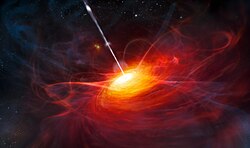| Emission nebula | |
|---|---|
| Planetary nebula | |
 Image of the Kronberger 61 nebula taken by the Gemini Observatory | |
| Observation data: J2000 epoch | |
| Right ascension | 19h 21m 38.936s [1] |
| Declination | +38° 18′ 57.2420″ [1] |
| Apparent dimensions (V) | 1' 30" |
| Constellation | Cygnus |
| Designations | Kronberger 61, Soccer Ball Nebula [1] |
Kronberger 61, also known as the "soccer ball", is a planetary nebula discovered by an amateur astronomer in January, 2011, with the newer images having been taken by the Gemini Observatory. [2] The nebula is named for Austrian Matthias Kronberger, [3] who is a member of the amateur group Deep Sky Hunters. The object is estimated to lie 13,000 light-years away. They discovered the nebula while searching near the northern constellation of Cygnus. [4] It is hoped that the discovery will help resolve a decades-old debate, regarding the role of stellar companions in the formation and structure of planetary nebulae. [5]
The nebula is within a relatively small area, which is currently being monitored by NASA's Kepler planet finding mission and the light of the nebula is primarily due to the emissions from doubly ionized oxygen. [5]


